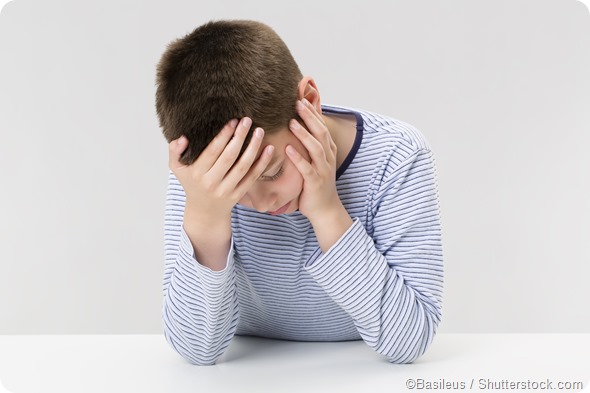
Headaches in Children and Teenagers
Headaches are a common complaint in children and teenagers. As children approach adolescence the frequency of headaches tends to increase. Boys, before puberty, are reported to have a greater frequency of headaches than girls. However, the frequency in girls surpasses that in boys after the onset of puberty. Most often, this frustrating ailment is not serious and up to as many as 8 in every 10 teenagers may experience at least one headache in a month.

It is normal for many parents to be worried about serious pathologies like brain tumors when their children complain of headaches. However, most of these headaches are the consequences of lifestyle and stress issues as well as being symptoms of conditions such as infections, the cold or flu. Headaches that occur during childhood and adolescence are often shorter and different from those that occur during adulthood.
Types of headaches
There are many different types of headaches. In children and adolescents, the most common types of headaches are muscles tension and migraine headaches. Migraine headaches have a tendency to run in families. They present as severe and episodic headaches accompanied by vomiting, nausea and sensitivity to noise and light. These headaches are often described as having a throbbing character and usually manifest on one side of the head only. However, experiencing a migraine on both sides of the head is not unheard of.
Tension headaches may occur daily or periodically and do not include the symptoms that are associated with migraines. They occur due to the contraction or stiffening of the head or neck muscles. These headaches are described as being dull and are usually felt on both sides of the head and in other cases at the back and front as well. Children experiencing pressure, anxiety or depression at home or school may frequently have this type of headache.
Mixed headache syndromes, also known as transformed migraines, are a combination of tension and migraine headaches. Inflammatory and traction headaches are caused by illnesses or an increase in intracranial pressure due to pathologies such as hemorrhaging or tumors.
Headaches may also be classified by their duration, onset and frequency. Acute headaches occur suddenly and resolve quickly and many cases may be due to migraine or tension. Chronic non-progressive headaches are the most common in adolescents and are frequent headaches that tend to be associated with depression, tension and stress. Chronic progressive headaches happen over a period of time and get increasingly worse, these are the least common and may be signs of a tumor, brain infection or other conditions.
Headache management
Prevention is always better than cure; thus, several steps may be taken in order to avoid potential triggers. It is not always clear-cut what exactly causes headaches in many children and teenagers. However, some culprits are chocolate, caffeine, artificial sweeteners, missed meals, inadequate sleep and stress. Keeping a diary is important to assist in determining the potential trigger. Important to note in such a diary is the onset, duration, character and intensity of the headache as well as the part of the head affected and any particular foods that were eaten and activity that was being done.
Treating a headache that occurs occasionally may involve over-the-counter pain relievers, such as ibuprofen or paracetamol. These medications should not be overused however, because they can cause painful rebound headaches. Migraine headaches do not have a known cure. Hence, identifying the trigger is of utmost importance. Severe headaches may require prescription drugs for treatment. Children with a history of seizures, head injury and other neurological and systemic symptoms may need further evaluation and tests done to identify if there is any underlying pathology.
Sources
Further Reading
Last Updated: Feb 26, 2019






















.png)










No hay comentarios:
Publicar un comentario